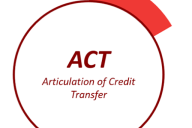You have /5 articles left.
Sign up for a free account or log in.
I started at a community college but graduated from Yale University. That shouldn’t surprise you.
When I graduated from Yale Law School last year, I found myself reflecting on the unlikely academic journey that led me to that point. My mother and her family fled the Cambodian genocide as refugees, and my father came to the United States from Argentina. I wanted to be the first in my family to go to college. But growing up low income, I wasn’t sure how I could afford a four-year university.
I enrolled at my local community college, Pasadena City College, while working multiple jobs to afford school and support my family. During my second year at PCC, I applied to Yale as a transfer student. I was so certain that I would not be accepted that I barely looked at where the school was located. To my shock, I got in. After a quick Google search confirming that Yale was in Connecticut, I transferred there for my bachelor’s degree. I went on to earn my master’s degree from the University of Oxford and my law degree at Yale Law School.
While my story is an uncommon one, it’s not unheard-of. Research shows community college students who transfer to “elite” institutions successfully graduate at the same levels as students who enroll directly from high school or transfer from four-year schools. At the same time, community college transfers only account for 5 percent of undergraduate students at elite colleges and universities. I was one of three community college students in the country who transferred to Yale in 2015.
The transfer process has long been viewed as a crucial tool for helping students from underserved backgrounds access social and economic mobility. But most community college students never transfer and earn a bachelor’s degree. While interventions in community colleges are an important part of tackling this issue, four-year universities must also do far more to ensure community college students can transfer to these institutions and thrive.
About half of all students start their higher education at two-year institutions, and 80 percent of those students say they plan on eventually earning a bachelor’s degree. And yet just one-quarter end up enrolling in a four-year program. Only 17 percent earn a bachelor’s degree. The COVID-19 pandemic has increased the hardships these students face. Since the fall of 2020, community college transfers to four-year institutions have fallen by 14.5 percent (about 78,500 students). In addition, students who benefit from the college transfer process tend to not be those from underrepresented or underserved backgrounds.
Transfer students—especially students from low-income backgrounds and first-generation college students—encounter a variety of unnecessary hurdles on their way to a degree. For example, studies have shown that students lose an estimated 43 percent of their credits when they transfer. I personally lost a semester’s worth of credits, wiping out months of hard work and extending my time to a degree. I was fortunate to receive the Jack Kent Cooke Undergraduate Transfer Scholarship, which provided financial support while I made up credits. Other low-income students who lose credits during the transfer process aren’t so lucky. It’s one of the many obstacles that community college students face once they arrive on campus.
Community college transfer students also typically lack guidance and advice at their new institutions. The knowledge about how to navigate the complexities of a four-year institution that many students take for granted is rarely imparted to us in a meaningful way. Students are often lost. It can be overwhelming and lonely, especially at campuses that accept few transfer students.
Worse yet, most community college students never get through the door in the first place. The application process is rife with steps that make it harder for community college transfer students to demonstrate their talents, capabilities and passions and earn admission to a four-year university. For example, many private four-year institutions have long required transfer students to submit standardized test scores. While this requirement was largely suspended during the pandemic, colleges are now deciding whether to bring it back. This requirement never made sense for community college students.
The justification for requiring standardized test scores for high school applicants stems from the idea that such scores can serve as a predictor of how students will perform in college. Community college students, however, have already demonstrated how they’ve performed at a postsecondary institution. Furthermore, because most community colleges lack a similar requirement, students who plan on going straight to community college from high school often opt out of taking any standardized tests, unknowingly limiting their options for when they decide to transfer later.
So what can institutions do to widen opportunities for community college transfer students? They can start by creating a sense of belonging long before such students even consider applying. They can conduct more outreach at local community colleges and better publicize that not only is it possible for them to transfer but that they will be welcomed. Part of this outreach can involve creating articulation agreements with local community colleges, which guarantee that credits from those community colleges will transfer.
Institutions can also reimagine their application process to permanently remove barriers like test score requirements. Likewise, they can automatically waive application fees for community college students, many of whom are from low-income backgrounds. Once students are enrolled, institutions should make every effort to offer resources and orientation programs to ensure students feel supported, at home and prepared to excel. That includes providing them with tailored academic advising and connecting them to current and past transfer students who are in or have been in the same shoes.
When I graduated from Yale Law School, I was fortunate to carry our school’s flag during the commencement procession because of my work as chair of the school’s student government. But I wasn’t just representing Yale Law School. I was representing all the classmates and peers that I learned alongside in community college. Community college students are just as capable and talented as any other student. But they too often encounter challenges that derail their aspirations. That doesn’t need to be the case. With the right steps, institutions can ensure that more community college transfer students succeed so stories like mine are not rare or unexpected but the norm.


